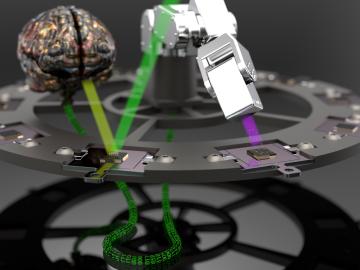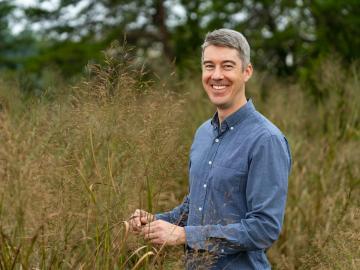Filter News
Area of Research
News Type
Date
News Topics
- 3-D Printing/Advanced Manufacturing (2)
- Artificial Intelligence (7)
- Big Data (6)
- Bioenergy (2)
- Biology (2)
- Biomedical (2)
- Biotechnology (1)
- Buildings (5)
- Chemical Sciences (7)
- Clean Water (2)
- Climate Change (8)
- Composites (2)
- Computer Science (5)
- Critical Materials (3)
- Decarbonization (5)
- Energy Storage (5)
- Environment (7)
- Fusion (1)
- Grid (1)
- High-Performance Computing (5)
- Isotopes (2)
- ITER (1)
- Machine Learning (3)
- Materials (5)
- Materials Science (3)
- National Security (2)
- Net Zero (1)
- Neutron Science (2)
- Nuclear Energy (1)
- Partnerships (3)
- Physics (1)
- Polymers (2)
- Quantum Computing (1)
- Simulation (4)
- Statistics (2)
- Sustainable Energy (4)
- Transportation (4)
Media Contacts

An Oak Ridge National Laboratory team revealed how chemical species form in a highly reactive molten salt mixture of aluminum chloride and potassium chloride by unraveling vibrational signatures and observing ion exchanges.

Six firms received Small Business Awards from the Department of Energy’s Oak Ridge National Laboratory. The companies, selected from small business service providers to the lab, were recognized by ORNL's Small Business Programs Office for their specific capabilities and contributions.

Researchers at Oak Ridge National Laboratory have developed free data sets to estimate how much energy any building in the contiguous U.S. will use in 2100. These data sets provide planners a way to anticipate future energy needs as the climate changes.

Today, scientific discovery is accelerated by automated experiments, artificial intelligence and high-performance computing. A novel tool developed at ORNL that leverages those technologies has demonstrated that AI can influence materials synthesis and conduct associated experiments without human supervision.

The United States has enough biomass potential to produce 35 billion gallons per year of aviation biofuel by 2050, a new report confirms. ORNL’s John Field provided biomass feedstock production expertise to the report focused on the role of the bioeconomy in U.S. decarbonization strategies.

Oak Ridge National Laboratory scientists ingeniously created a sustainable, soft material by combining rubber with woody reinforcements and incorporating “smart” linkages between the components that unlock on demand.

Building innovations from ORNL will be on display in Washington, D.C. on the National Mall June 7 to June 9, 2024, during the U.S. Department of Housing and Urban Development’s Innovation Housing Showcase. For the first time, ORNL’s real-time building evaluator was demonstrated outside of a laboratory setting and deployed for building construction.

Vanderbilt University and ORNL announced a partnership to develop training, testing and evaluation methods that will accelerate the Department of Defense’s adoption of AI-based systems in operational environments.

ORNL scientists develop a sample holder that tumbles powdered photochemical materials within a neutron beamline — exposing more of the material to light for increased photo-activation and better photochemistry data capture.

ORNL researchers used electron-beam additive manufacturing to 3D-print the first complex, defect-free tungsten parts with complex geometries.




